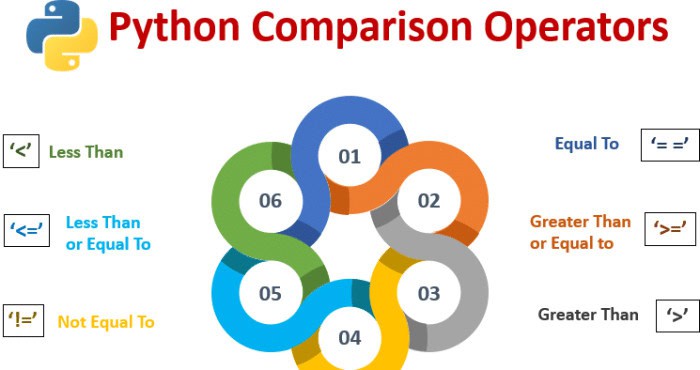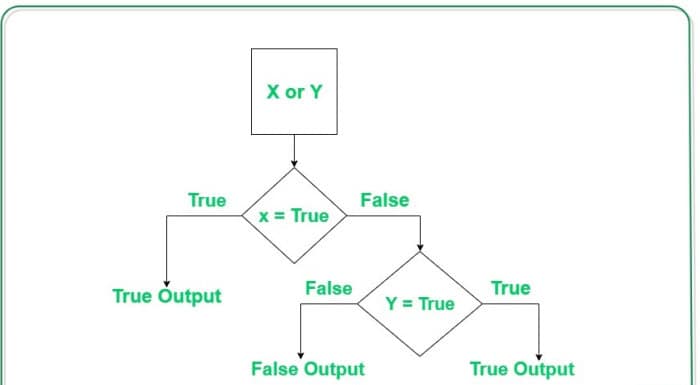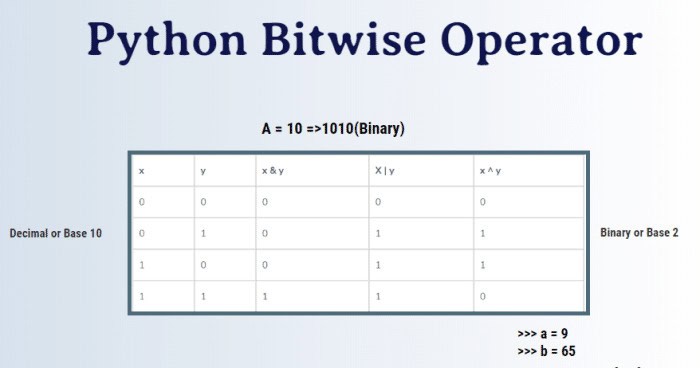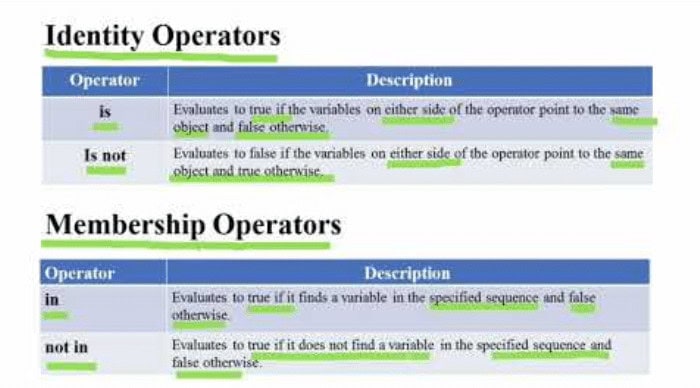Operators are symbols or keywords to perform specific operations in a programming language. They alter variables, perform various calculations, and make decisions in a program. Know about types of operators in Python.
Python’s six types of operators are arithmetic, comparison, logical, bitwise, assignment, membership, and identity operators. These operators perform various tasks such as mathematical calculations, evaluating conditions, and manipulating data.

So, let’s see these operators in detail and know more about them.
See Also: Top Java Project Ideas For Final Year Project (Complete Guide)
Table of Contents
Types of operators
Here are a few types of operators in python
Arithmetic Operators
In Python, arithmetic operators do mathematical calculations. These include addition (+), subtraction (-), multiplication (*), division (/), floor division (//), modulus (%), and exponent (**).
The floor division divides one number by another. And returns the quotient rounded off to the nearest integer with the lowest value.

The exponent raises a number to a specified power.
An example is
x = 2
y = 3
print (x + y)
Output: 5
These operators can perform calculations with data types like integers, floating points, and complex numbers. However, their behavior might differ with different data types. An example is the multiply (*) operator replicates two strings.
Comparison Operators
The comparison operators are used in the comparison of two values in Python. They generate the output, True or False, based on the comparison performed. These include greater than (>), less than (<), greater than or equal to (>=), less than or equal to (<=), equal to (==), and not equal to (!=).

An example is
x = 3
y = 2
print (x > y)
Output: True
These operators can perform calculations with data types like integers, floating points, and lists.
Logical Operators
Logical operators combine multiple conditions in Python. They generate the output in terms of true or false, based on the conditions. These include

and operator:
It returns True if the value on the left and the right are actual.
For example,
x = 3
y = 7
print (x > 1 and y < 10)
Output: True
or operator:
It returns True if the value on either the left or the right is actual.
For example,
x = 3
y = 7
print (x > 10 and y < 10)
Output: True
not operator:
It returns the opposite of the given condition.
For example,
x = 2
print (not(x > 1))
Output: False
Bitwise Operators
Bitwise operators perform bit-level operations in Python. These include
Bitwise AND (&): I
t returns 0 when both bits are zero or when either is one and 1 when both are one.

For example:
x = 5 # binary: 0101
y = 3 # binary: 0011
print (x & y)
Output: 1 #binary: 0001
Bitwise OR(|):
It returns 0 when both bits are zero and 1 when either of the bits is one, or both are one.
For example:
x = 5 # binary: 0101
y = 3 # binary: 0011
print (x | y)
Output: 7 #binary: 0111
Bitwise XOR (^):
It performs the XOR operation by returning 0 when the two bits are the same and 1 when the bits are different.
For example
x = 5 # binary: 0101
y = 3 # binary: 0011
print (x ^ y)
Output: 6 #binary: 0110
Bitwise NOT (~):
This operator inverts all the bits of a number.
For example
x = 5 # binary: 0101
print (~x)
Output: -6 #binary: 1010
Left shift (<<):
This operator shifts the bits of a number to the left by a specified number of places.
For example:
x = 5 # binary: 0101
print (x << 2)
Output: 20 # binary 0101 0000
Right shift (>>):
It shifts the bits of the given number to the right by the number of places specified.
For example:
x = 20 # binary: 0101 0000
print (x >> 2)
Output: 5 # binary 0101
Bitwise operators manipulate binary data and perform low-level operations such as setting, clearing, or testing individual bits.
Assignment Operators
These operators are used in the assignment of values to variables. These include
Simple assignment (=) operator:
It is used in assigning values.

For example,
x = 5
Shorthand operators(+=,-=,*=,/=,%=,//=,**=):
The stated arthematic calculation is carried out, and the output is then assigned to the variable.
For example,
x = 5
x += 2 # x = x + 2
print (x)
Output: 7
They make the code more readable and streamlined. They work with data types like strings, integers, and floating-point values.
Membership and Identity Operators
Membership operators check if a value is a sequence member (list, tuple, string, etc.). Identity operators determine whether two variables refer to the same memory object and whether both give a True or False evaluation.

Whether or not the value is present in the sequence determines what membership operators return. These include an operator and not an operator.
The return value of identity operators determines whether the variables correspond to the same object. These include is and is not operators; they check the object identity, not the object equality.
- In operator: True is returned if the value is encountered in the sequence.
- Not in operator: If the value is absent from the sequence, it returns True.
- Is operator: If both variables point to the same memory item, it returns True
- Is not operator: If the variables don’t change all points to the same memory object, it returns True.

An example is
x = [1, 2, 3]
y = [1, 2, 3]
print (x is not y)
Output: True
FAQS
What are arithmetic operators in Python?
Arithmetic operators in Python perform mathematical operations on numeric values, such as addition, subtraction, multiplication, and division.
What are comparison operators in Python?
Comparison operators in Python are used to compare the values of two variables or expressions and return a Boolean value indicating whether the comparison is true or false.
What are logical operators in Python?
Logical operators in Python are used to combine Boolean expressions and return a Boolean value indicating whether the combination is true or false.
What are assignment operators in Python?
Assignment operators in Python are used to assign values to variables and can also perform arithmetic or bitwise operations as part of the assignment.
What are membership operators in Python?
Membership operators in Python are used to test whether a value or variable is a member of a sequence, such as a list or tuple.
What is the order of precedence of operators in Python?
The order of precedence of operators in Python determines the order in which operations are performed. Arithmetic operators have the highest precedence, followed by comparison, logical, membership, identity, bitwise, and assignment operators.
Conclusion
In conclusion, Python provides a range of operators to execute various actions. To effectively construct Python code, knowing how to use these operators is critical. To better grasp how these operators operate and how to use them effectively, readers are advised to practice using them in their code.
Therefore this was all about types of operators in Python.
See Also: Top Java Project Ideas For Final Year Project (Complete Guide)

